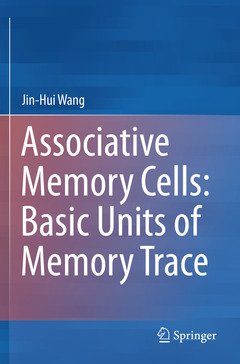Description
Associative Memory Cells: Basic Units of Memory Trace, 1st ed. 2019
Author: Wang Jin-Hui
Language: English
Subjects for Associative Memory Cells: Basic Units of Memory Trace:
Approximative price 105.49 €
In Print (Delivery period: 15 days).
Add to cartPublication date: 09-2020
Support: Print on demand
Approximative price 105.49 €
In Print (Delivery period: 15 days).
Add to cartPublication date: 09-2019
275 p. · 15.5x23.5 cm · Hardback
Description
/li>Contents
/li>Biography
/li>Comment
/li>
Wang Jin-Hui has received PhD from Shanghai Institute of Physiology, Chinese Academy of Sciences. After postdoctoral training in State University of New York and University of Texas, Wang has joined to University of Kansas as tenure-track assistant professor. Subsequently, Wang is appointed by Chinese Academy of Sciences as a distinguished professor. After being an independent researcher, Wang has found working principles of neurons and synapses about the conversion of inactive into active synapses, the conversion of irregular to regular transmission pattern at unitary synapse, homeostatic plasticity among subcellular compartments, spike amplification at axons as well as the functional compatibility between axonal branches and their postsynaptic partners. In terms of cellular architecture for learning and memory, Wang’s group has discovered and identified associative memory cells as basic units in memory trace.
Focusing on associative memory cells and their working principles
Presenting the author's personal perspectives on pathology and therapeutic strategies for memory deficits in patients
Providing a valuable overview of the field for neuroscientists, psychologists and students




